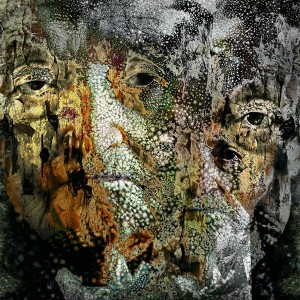In Photographs, Ed Freeman Distorts Reality to Reveal Greater Truth
Ed Freeman felt depressed looking at a photo of himself that he judged to look old and tired. So, he took 20 years off his face in Photoshop, splicing his head onto a young man’s torso. The result made him quite happy.
“I know I did the retouching. I manipulated it. I did it,” says Freeman. “And still, I look at it and I feel better about myself.”
We tend to believe what we see; granting photographs a special authority in the dictation of reality. That is the power of manipulation. As photography transcends its function as a means for documentation on the wings of advanced image editing software like Photoshop — crossing over into the realm of art and becoming both subjective and malleable — it wields an emotive power, intrinsic to that which is real.
Freeman first began identifying significant moments, while capturing their essence, through straight photography; however, technology eventually enabled the expansion of his communicative capacity in this medium.
“I’ve combined 10 photographs into one,” Freeman says. “I’ve printed them on anything from wood to silk to strange kinds of handmade Japanese paper. I’ve processed them on the computer until they’re almost unrecognizable, made Polaroid transfers, and blown them up to six-feet across. I’ve done every conceivable manipulation I can think of.”
He acts out his imagination and fantasies in the immaculate and sensational visuals of his series such as those seen in Underwater, Surfing, Landscapes, and Desert and Urban Realty — their contents structured according to the logic of real world forms.
“Every portrait is a self-portrait as well as a picture of the person you’re photographing,” he says. “It’s true with landscapes and anything else too. You’re really photographing what’s in your own heart and mind and in your imagination and your fantasies. I like the world to be a beautiful place. I like people to look beautiful. And they do to me.”
The logic holding these scenes together fully melts into an enlightening and fractional mystery in his new experimental series Faces, presently on display at the Ed Freeman Photography Gallery in Chinatown, Los Angeles.
The foregrounds of rich colors, patterns, and textures that blend with the ambiguous contours of these human faces obliterate any sense of objective reality, illuminating instead the raw emotion embedded in their expressions — such that they are somehow reminiscent of someone you know or once knew.
Freeman discusses his creative process in capturing emotions and sensations truer to life as they become real through digital manipulation and distortion.


